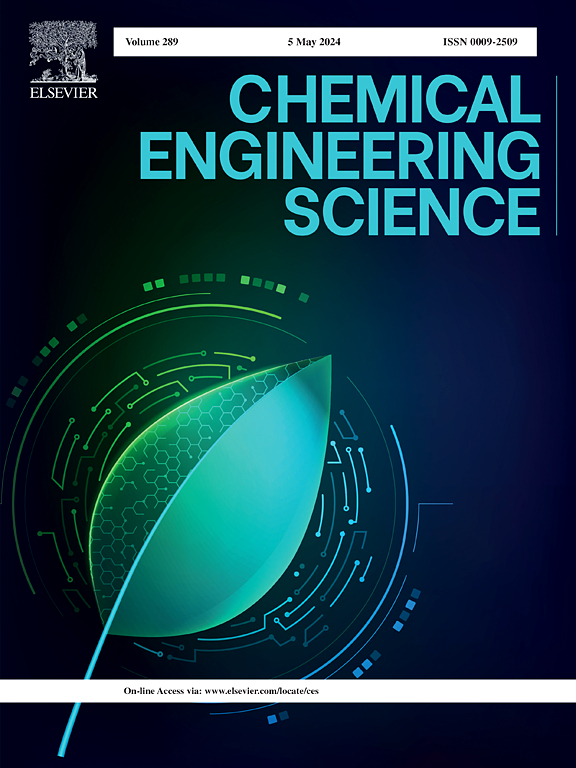固定床传热参数估计--老问题新解
IF 4.1
2区 工程技术
Q2 ENGINEERING, CHEMICAL
引用次数: 0
摘要
伪均质二维 kr-hw 固定床传热模型用于固定床反应器的模拟和设计。两个参数的估算主要有两种方法。方法 2 使用床层中心线温度和出口混合杯温度。方法 4 使用逐渐加长的床层出口处的径向温度曲线测量值。使用颗粒分辨计算流体动力学(PRCFD)模拟管与颗粒直径比 N=6 的球床传热,以确定这些方法是否给出了相同的参数值。如果混合杯温度低 1 K,则方法 2 和变化给出的 hw 值被低估。对于适用于足够长床深的方法 4,可以获得很好的参数估计值。提出了方法 2 的新版本,它保留了只测量轴向剖面的优点,同时避免了通过单次温度测量进行估算的敏感性问题。本文章由计算机程序翻译,如有差异,请以英文原文为准。
Fixed bed heat transfer parameter estimation –a new look at an old problem
The pseudo homogeneous 2D fixed bed heat transfer model is used for fixed bed reactor simulation and design. The two parameters are estimated by one of two main approaches. Method 2 uses the bed centerline temperature and the exit mixing-cup temperature. Method 4 uses radial temperature profile measurements at the exits of progressively longer beds. Particle-resolved computational fluid dynamics (PRCFD) is used to simulate heat transfer in a bed of spheres with tube-to-particle diameter ratio to determine whether the methods give the same parameter values. Method 2 and variations gave underestimated values of if the mixing-cup temperature was low by 1 K. For Method 4 fitted to long enough bed depths, good estimates of the parameters were obtained. A new version of Method 2 is proposed, which retains the advantages of measuring only axial profiles, while avoiding the sensitivity problems of estimation from single temperature measurements.
求助全文
通过发布文献求助,成功后即可免费获取论文全文。
去求助
来源期刊

Chemical Engineering Science
工程技术-工程:化工
CiteScore
7.50
自引率
8.50%
发文量
1025
审稿时长
50 days
期刊介绍:
Chemical engineering enables the transformation of natural resources and energy into useful products for society. It draws on and applies natural sciences, mathematics and economics, and has developed fundamental engineering science that underpins the discipline.
Chemical Engineering Science (CES) has been publishing papers on the fundamentals of chemical engineering since 1951. CES is the platform where the most significant advances in the discipline have ever since been published. Chemical Engineering Science has accompanied and sustained chemical engineering through its development into the vibrant and broad scientific discipline it is today.
 求助内容:
求助内容: 应助结果提醒方式:
应助结果提醒方式:


